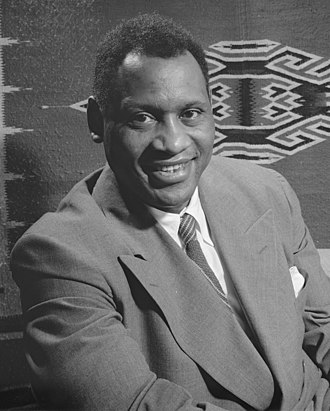That was the topic of an AMS Webinar at the beginning of this week. Here’s the online blurb:
Presented by the AMS Interfaith Committee, hear stories, work, ideas from panelists across various spiritual/faith-based backgrounds on environmentalism, and how the AMS and spiritual/faith communities can work together in this important space. This is one of a series of topics related to conversations, work, and ideas on collaboration and relational building between the AMS and faith/spiritual communities. Organizer: Dr. Carlos Javier Martinez – National Center for Atmospheric Research Panelists: Rabbi Geoff Mitelman – Sinai and Synapses Dr. William (Bill) Hooke – American Meteorological Society James Rattling Leaf, Sr. – Cooperative Institute Research Environmental Sciences, North Central Climate Adaptation Science Center Dr. Emma Frances Bloomfield – University of Nevada, Las Vegas Nana Firman – GreenFaith The Q&A, chat file, anonymous survey results, and attendee list from this webinar will be shared with its organizers.
My impression is that the webinar was recorded and will be available online to members sometime soon. Very thankful for the opportunity to be part of the event; meant a great deal. Some personal takeaways (starting with a full disclosure):
Disclosure. At the time I embarked on a career in atmospheric science as a newly-minted Ph.D. in 1967, I saw myself as a confirmed atheist. Wound up embracing Christianity in the spring of 1976 – a story for another day. My life has felt profoundly different – more meaningful and more complete – ever since.
Takeaway #1. Faith and religion have long been considered the third-rail of conversation in the government workplace, and in much of the private-sector and academic workplace as well. There’s good reason for this, as much of the growing awareness of systemic racism and other barriers to diversity, equity, and inclusion in our society attests. It’s all too easy for religious bias to negatively impact decision making and basic standards of workplace fairness (ironic, as most faiths hold fairness and equity as basic tenets). But just as it’s become necessary for our society to put systemic racism and related negative topics on the table and thus begin to rectify them explicitly, it also seems important and timely to open a broader, more nuanced discussion of faith, spirituality, and faith-based knowledge systems that could offer many positives to our profession.
However, years of enforced silence on this topic in the professional sphere mean that today we lack vocabulary, protocol, and traditions for having the safe and respectful discussion that’s needed to jump start the process. We should expect it take some time to develop these needed foundations. We should enter this realm with some appropriate caution, and take special pains to bring along representatives of as many indigenous forms of worship worldwide into the discussion as early and quickly as we can.
Takeaway #2. Spiritual and faith-based knowledge systems already can and do inform the Weather, Water, and Climate Enterprise – the academic-, public-, and private-sector institutions and professionals engaged in the science and application of weather and weather forecasting. Ignoring these aspects to our work is therefore not an option; we must instead seek to integrate them effectively.
Start with application, where the connection is more familiar, easier to see. Most people would agree, and the AMS vision statement makes explicit, the “application” is not self-serving so much as for societal benefit. In a world where broad swaths of society and societal institutions self-identify as spiritual or faith-based, life-protecting risk communications on all time frames from climate change to tornado warnings will work best when framed in terms that are compelling and actionable to members of these groups. Similarly, what is deemed a true societal benefit versus something less, or even a negative, depends on the cultural and spiritual lens of the person or peoples involved. Given these realities, the issue is not whether faith-based and spiritual knowledge systems inform science, but rather how to harness such “informing” fairly and effectively.
Connections to the science itself might seem less obvious, or perhaps unnecessary. But consider the following question: where do new scientific concepts originate? Physical scientists might argue they come from experiment and observation, and from mathematics – but social scientists tell us that most of our ideas originate socially, from contact with others. Faith and cultural backgrounds and spiritual natures necessarily color and shape these contacts. And consider the choices that determine what science is prioritized, gets attention, gets financially supported, gets done. In these days of government and private-sector budget support for science, much of that has a faith-based, or spiritual, or cultural tinge. And this is only a single example, to illustrate a point. Other examples abound.
All this is preamble, a much broader issue than the connection between faith and spirituality and environmentalism and environmental science per se. This week’s panelists focused to a great degree on environmentalism and the calls of Christian, Muslim, and Jewish faiths for environmental stewardship. But the spectrum of views spanning just these three faith traditions is far broader than the hour of conversation would allow. Even in this respect, they represented only the merest sliver of the thinking on the subject. Meanwhile, other faith perspectives – Hinduism, Buddhism, and those stemming from the varied experience and tradition of a host of indigenous peoples worldwide – weren’t heard from. That’s why the AMS BRAID chair Ayesha Wilkinson and the webinar moderator Carlos Martinez emphasized early and often that Tuesday’s conversation was intended to be the first of many, rather than a one-off, and why they assiduously and repeatedly invited all participants to make suggestions about future topics and panelists.
Takeaway #3. (Readers may disagree with this one, but remember, the takeaways here are personal). One of the biggest benefits that the spiritual dimension has to offer is hope. By contrast, climate/global change issues tend to invite the opposite: fear and anger in the face of evidence of impending doom and the seeming failure of others to care or to take action. That negative outlook is only exacerbated by a raft of other societal ills all too evident today – including but not limited to the pandemic, social inequalities and unfairness of a variety of types, wars such as that now underway in the Ukraine, and more. To paraphrase Henry David Thoreau, most of us are living lives of quiet desperation.
Such dismal future prospects can turn some people, including some scientists, into scolds – delivering harsh messages that are growing more sharply pointed as the time window for stemming the worst effects of climate change seems to be closing. Worse, it’s well known from social science that negative emotional states make it more difficult to think clearly. This is bad news for scientists, engineers, and for the other professionals in the Weather, Water, and Climate Enterprise. Given that so many of the problems the larger world faces are in our wheelhouse, we need to be thinking at our best.
Again, most people, including those nominally “well off,” are hungry for real hope – hope that isn’t founded on delusion or ignorance, or momentary pleasurable distractions.
In the faith-based system of thought that I know best, that hope is fairly basic, and on point as well. It stems from nothing less than the message throughout the Old and New Testament Bible that a Higher Power is in the business of the restoring the Earth and its peoples to the originally-intended Eden-like state, and will ultimately succeed. And the Judeo-Christian tradition by no means has a monopoly on such hope.
Takeaway #4. Most of us will find it tempting, natural to dive right into future conversations on these topics. That’s appropriate and welcome and has much to recommend it. These matters, like all others, benefit from a diversity of views. But the presence of a few experts among this week’s panelists – Rabbi Geoff, Nana, and Emma – should remind us that there’s already an extensive thought and published literature here. Some might want to be more disciplined – allow such literature to inform their thinking.
Where to start? One point of departure might be the books on Carlos Martinez’ professional website.
(If I had one recommended addition to the books you’ll find there it would be Mike Hulmes’ Why We Disagree about Climate Change.)
Takeaway #5. Carlos Martinez is a force of nature. We all owe him a debt of gratitude for doing the hard work required to stand up a structured, respectful, actionable conversation on this set of issues, and showing us how we might ourselves work some of these perspectives into our respective day jobs. You’ll find his professional website useful as well as thought provoking, perhaps even inspiring.
Thanks, Carlos.




